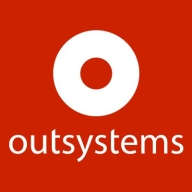

OutSystems and Retool are key players in the low-code development segment. OutSystems is favored for its comprehensive feature set, appealing to larger enterprises with its scalability and integration abilities. Retool, however, shines in efficiency, particularly for creating internal tools, thanks to its ease of use and integration capabilities. Data suggests OutSystems has higher satisfaction in pricing and support, while Retool provides a feature-focused model that attracts use in specific scenarios.
Features: OutSystems offers robust features such as full-stack support, visual programming, and advanced security measures. Its scalability and enterprise-grade solutions make it suitable for complex applications. Retool emphasizes efficient internal software creation with rapid interface development, API integrations, and pre-built components, providing ease and agility in customizing applications.
Room for Improvement: OutSystems can improve by simplifying its deployment process to cater to smaller organizations, enhancing user interface components for non-IT users, and reducing its overall cost to attract smaller enterprises. Retool could benefit from expanding its feature set to match broader enterprise needs, enhancing security features for large-scale use, and offering more comprehensive customer support options.
Ease of Deployment and Customer Service: Retool's deployment is designed for simplicity with minimal setup, allowing quick configuration, making it ideal for teams needing rapid solutions. OutSystems deployment is more structured and fits larger organizations requiring comprehensive application management. It boasts more extensive customer service, providing enterprise-level support, while Retool offers quicker, more direct assistance tailored to its niche user base.
Pricing and ROI: OutSystems involves a higher initial setup cost, justified by its scalability and comprehensive solution suite, offering long-term ROI for complex projects. Retool presents a more cost-effective initial setup, focusing on swift deployment and targeted ROI for internal tasks. While OutSystems targets versatile enterprise needs with higher pricing satisfaction, Retool is ideal for swift, internal application deployment, balancing cost and capability effectively.


OutSystems is a platform for low-code application development that unites design, code, and deployment to simplify development so any business can create innovative solutions in a timely manner. There are various use cases an organization can employ with OutSystems, including:
OutSystems offers faster development and deployment times than hand-coding while delivering unique and personalized solutions to its customers. The main focus of OutSystems is high-performance low code which enables businesses to create functional products that answer their needs. It offers clients the ability to develop enterprise-grade applications with a high level of security.
The product stands out from its competitors as it offers:
It ensures its clients that the applications built using this platform are as scalable as hand-coded ones while increasing workspace productivity and evolving applications’ capabilities.
OutSystems Features
OutSystems has various features through which users can develop and deploy highly efficient applications and other products. Some of the features include:
OutSystems Benefits
The solution offers a wide array of benefits to companies that utilize it in their application development. Some of these benefits include:
Reviews from Real Users
Harikrishnan R., a technical lead at Netlink Software Group America Inc, likes OutSystems because the tool helps with validation, offers good features, and is reliable.
An owner at a consultancy thinks OutSystems is versatile with great scalability and great technical support.
Retool enables rapid construction of internal tools with minimal coding, streamlining workflows across HR, customer support, and compliance. Praised for its drag-and-drop interface, extensive component library, and SQL support, it boosts organizational efficiency by automating tasks and enhancing data management.
We monitor all Rapid Application Development Software reviews to prevent fraudulent reviews and keep review quality high. We do not post reviews by company employees or direct competitors. We validate each review for authenticity via cross-reference with LinkedIn, and personal follow-up with the reviewer when necessary.